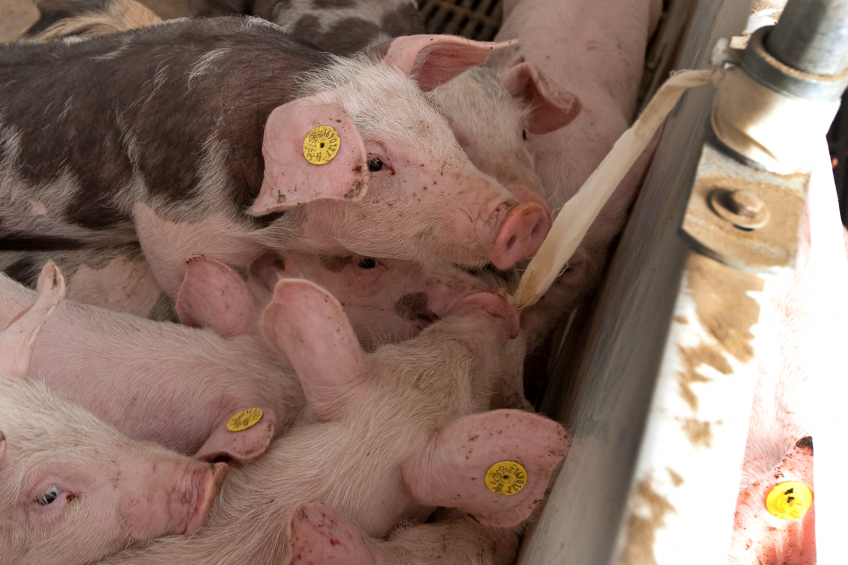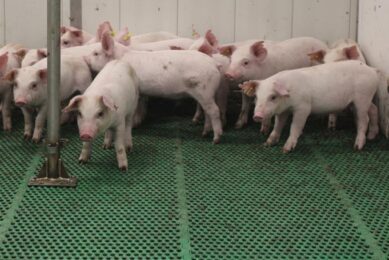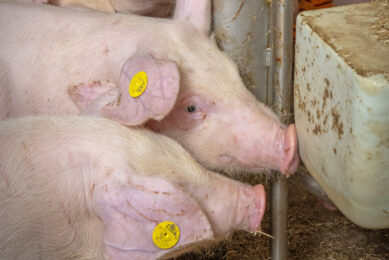PRRS diagnostic techniques

Neither costs nor efforts have been spared to establish effective ?prevention, control and elimination strategies for Porcine Reproductive and Respiratory Syndrome (PRRS). It is important that vets understand best practices in order to diagnose a PRRS outbreak. What tools do they have?
Porcine Reproductive and Respiratory Syndrome (PRRS) is a virally transmitted disease among sows and pigs which affects their ability to reproduce, and causes pneumonia and increased mortality in young animals. It is a global problem that affects the swine industry worldwide and is highly significant economically: in the US alone, the total cost to the industry has been estimated at US$664 million per year.
To fight these challenges, a key part of strategies has been the development and implementation of reliable, accurate and timely diagnostic procedures. As these techniques evolve, it is important that veterinarians and industry stakeholders continue to adopt best practices so that a coordinated response to the disease can be maintained across the industry.
Choosing the right PRRS diagnositic approach
An important first step in choosing an appropriate diagnostic approach is to decide the objectives of the tests to be performed. These objectives might include detection of infection in at least one animal in a herd, determining the prevalence of a virus within the herd, confirming exposure to virus or vaccine, or assessing the timing of an infection. These factors will determine which animals to test, the number of samples required and the appropriate tissues to use. Furthermore, interpreting individual test results may not reflect the status of the entire herd, as the timeline of infection will vary for each individual animal – so care must be taken.
Choosing the right sample size for PRRS diagnostics
Many factors need to be considered when choosing an appropriate sample size for PRRS diagnostics. In order to identify at least one positive sample from a herd, considerations include herd size, the expected prevalence of the disease within the herd, the degree of certainty required, and the sensitivity and specificity of the test to be used.
The timing of tests is also critical, as several aspects of infection and immune response, including viraemia, viral shedding, antibody response and the appearance of lesions, can occur within specific time windows (Figure 1).
Figure 1- Time windows of infection and immune response. zoom
Choosing the right tissue sample
There are broadly two categories of diagnostic test: viral detection and viral exposure. Viral detection requires collection of virus-laden tissue, bronchoalveolar lavage (BAL) fluid, thoracic fluid, semen, blood, oral fluid or environmental samples; while detection of viral exposure requires blood, oral fluid collection or muscle transudate in order to test for anti-PRRSv antibodies. Therefore the choice of tissue sample will be determined by a variety of factors, including the specific test objectives, the choice of diagnostic test and the facilities available.
Diagnostic tests
Since its discovery, PRRSv and/or its antibodies have been detected using a variety of techniques, some of which are now seldom used in the field for a variety of reasons: there might be a more research-oriented technique, the technique is overly time-consuming, expensive or requires highly trained staff. In the following sections, we will briefly describe currently used techniques, mentioning some of the older ones to illustrate how far diagnostics have evolved over recent years.
PRRSv detection
Virus detection techniques provide a useful indicator of disease, although some are used primarily as research tools because they are labour-intensive, expensive and slow. One such example is virus isolation, which uses specific cell lines to amplify viruses from tissue samples through a process of infection and replication. Another is electron microscopy, which can play an important role in characterising new strains not recognised by specific molecular or antibody approaches. Newer, rapid and less costly techniques, described below, are now widely used, being more practical for routine and timely diagnosis.
1. Reverse transcriptase polymerase chain reaction
Reverse transcriptase polymerase chain reaction (RT-PCR) is the test of choice for foetuses when vertical transmission is suspected. It is a rapid, highly sensitive and specific method used to detect PRRSv in a range of tissues (including serum, semen, oral fluids, lungs, lymph nodes, spleen and tonsils) and also in environmental samples. The process involves the extraction of viral RNA from the biological sample, conversion to DNA by reverse transcriptase, amplification by PCR and the detection of amplified DNA.
A drawback of RT-PCR is that the window for detection of the virus after infection differs both between the tissues sampled and between animals. Furthermore, the high sensitivity of RT-PCR can result in false positive results due to contamination, whereas the specificity of primers may result in false negative results for some genetically diverse viruses.
2. Immunohistochemistry
Immunohistochemistry (IHC) is used in conjunction with microscopy to detect PRRSv in tissue from a number of sites, including lungs, lymph nodes, thymus, tonsils, spleen and kidneys. Typically, tissues are first fixed with formalin (although fresh tissues can also be used) and then labelled with monoclonal antibodies targeting the viral nucleocapsid. These are visualised using a tagged secondary antibody. While IHC has high specificity (100%), it shows only moderate sensitivity (67%). This can, however, be improved by processing tissues within 48 hours of fixation. Sensitivity is highest at the early stages of infection, but progressively decreases during later stages, such as more than 28 days post-infection (DPI), and so is not recommended after 90 DPI. While IHC is effective in identifying a vertically transmitted virus in piglets, it may not be effective for some genetically diverse isolates.
3. Fluorescent antibody staining
Fluorescent antibody (FA) staining, typically used to evaluate BAL fluid or fresh/frozen lung tissue, is seldom used today. In this technique, samples are labelled directly with fluorescent antibodies to visualise nucleocapsids. This process is quicker and cheaper than IHC for measuring PRRSv, but, as with IHC, it may not detect genetically diverse isolates and is not recommended in the later stages of infection. Furthermore, false positives can be an issue due to the poor specificity of the primary antibody or high background staining.
4. Field test strips
Field test strips are a relatively new development in PRRSv diagnostics and, although not yet widely used, have the potential to provide rapid and convenient PRRSv detection without the need for specialised expertise or equipment. Field test strips detect virus in serum or tissue homogenates by immunochromato-
graphy. Samples are mixed with gold-labelled monoclonal antibodies that target specific PRRSv proteins, forming protein-antibody complexes which are captured on the strips. Captured complexes are then detected using a labelled secondary antibody. Current data are available only on a limited range of viruses.
Detection of PRRSv-specific antibodies
The detection of PRRSv-specific antibodies in serum is the most common method for diagnosing PRRS, although oral fluid samples or muscle transudates can also be used. In the US, oral fluid analysis has increased more than tenfold since 2010 (Figure 2).
Figure 2 – Use of oral fluid analysis in the US. zoom
PRRSv antibody detection is a constantly evolving diagnostic discipline. Some techniques are associated with time and resource issues, and are now used primarily in research. These include immunoperoxidase monolayer assay (IPMA), a highly specific and sensitive method, and the first serological test reported for the diagnosis of PRRS. In this assay, anti-PRRSv antibodies captured on microtitre plates by virus-infected cells are detected by peroxidase-labelled secondary antibodies. Positive samples are then assessed by light microscopy. Similarly, virus neutralisation (VN) produces difficult-to-interpret results.
While antibody detection can identify new PRRSv infections, it is less suitable for monitoring previously infected herds since it is unable to distinguish between antibodies generated through new infection, previous infection or vaccination.
1. ELISA
The enzyme-linked immunosorbent assay (ELISA) is the most common assay for the detection of PRRSv antibodies and has a specificity as high as 99.9% and a sensitivity of up to 98.8%, as demonstrated by research at Iowa State University in 2010. The abundant N protein of PRRSv is used to capture anti-PRRSv antibodies from tissue samples on the surface of coated test plates and a peroxidase-conjugated secondary antibody is used to visualise captured anti-PRRSv.
While ELISA is both rapid and convenient, it has its limitations. Immune responses are typically variable between animals and levels of antibody detected do not necessarily reflect the virulence of isolates. Furthermore, maternally derived antibodies and antibodies from feed can contaminate results. False negative readings during early infections can also be an issue.
A laboratory researcher working with animal virus ELISA tests.
2. FMIA
The fluorescent microsphere immunoassay (FMIA) is a multiplexed version of ELISA which uses differentially dyed fluorescent beads to capture multiple anti-PRRSv antibodies, which are then labelled with fluorescently labelled secondary antibodies. The technique allows several different antibodies to be detected simultaneously within a single, small sample. In serum, FMIA has demonstrated 98% sensitivity and 95% specificity. Furthermore, using oral fluids, for which traditional ELISAs have notoriously low sensitivity, FMIA has over 92% sensitivity and 95% specificity. It is also more sensitive than ELISA for the detection of early infections.
3. Indirect IFA
The indirect fluorescent antibody (IFA) assay is similar to IPMA but uses fluorescently labelled secondary antibodies to detect captured anti-PRRSv antibodies. Indirect IFA has demonstrated good specificity, but sensitivity depends on many factors, including the cell types used to capture antibodies, laboratory protocols and the antigenic profile of anti-PRRSv antibodies. Typically, indirect IFA is performed after ELISA to confirm false-positive results, but has also been used in surveillance programmes using oral fluids and muscle transudates.
4. Field test strips
As is the case for viral detection, field test strips are now avail-able to detect PRRSv-specific antibodies (using viral N protein). Field test strips are cheap, quick and easy to use without the need for expensive equipment, and have a reported sensitivity and specificity of 93% and 98%, respectively. However, the strips are not widely used at present.
Isolate characterisation
It is often important to characterise the infecting virus isolate to inform management decisions such as whether to move animals onto another farm, to track isolate spread and to determine if a new isolate might be present in a population of pigs. Molecular techniques, including RFLP and sequence analysis, have been used to provide a more definitive characterisation of the specific PRRSv detected by conventional assays.
Sequence analysis
Sequence analysis of viral genomes is now the method of choice for characterising PRRSv isolates. Sequencing and phylogenetic analysis is performed on PCR products from test samples, with serum and infected tissues providing the most reliable data. Data on the highly variable ORF5 sequence are the most reliable for distinguishing strains and a large library of ORF5 sequences is available for comparison. Phylogenetic relationships between strains are visualised using dendograms and these can be generated at the individual farm level to monitor local changes within the herd. Caution must be exercised when interpreting data on potential new viruses within the herd.
The future for PRRSv diagnosis
A combined approach of routine surveillance and disease diagnosis is required if efforts to control and eliminate PRRSv infection from swine herds are to be successful. While a range of techniques have become available to diagnose PRRSv infection, no test is 100% reliable under all conditions and for all animals. As new techniques are added to the armoury, it is increasingly important to make sure the correct tests are carried out at the correct time in the correct animals and with the correct interpretation to optimise effective management and prevention or control of an outbreak.
References available on request.
Further information can be found on Boehringer Ingelheim’s PRRS website.











